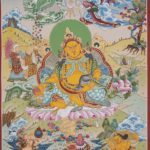About Work

In the context of Dharma, "work" refers to the mindful application of effort and intention in one's actions, guided by ethical principles and compassion. It involves performing one's duties with awareness, aligning with the values of right livelihood and service to others. Work in this sense is not just about earning a living but is a spiritual practice that contributes to personal growth, the well-being of others, and the cultivation of wisdom and virtue.























